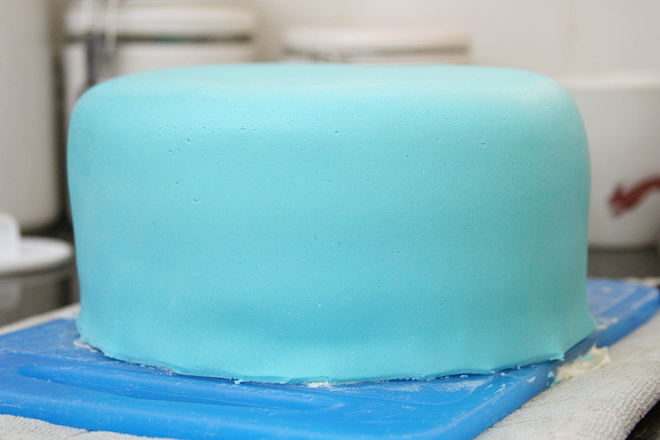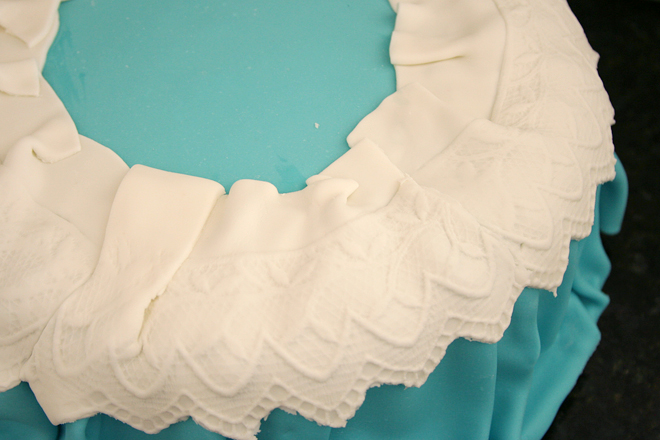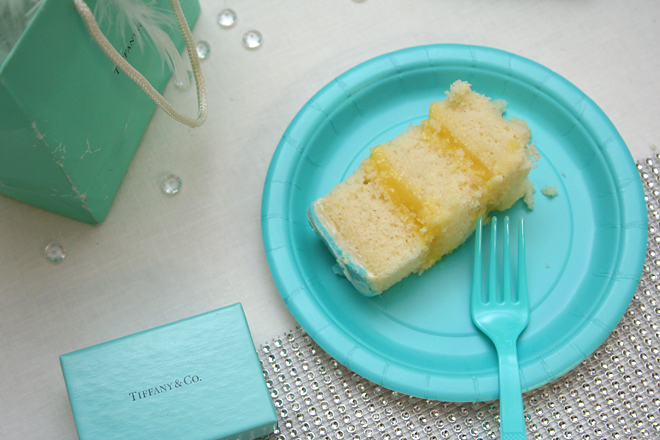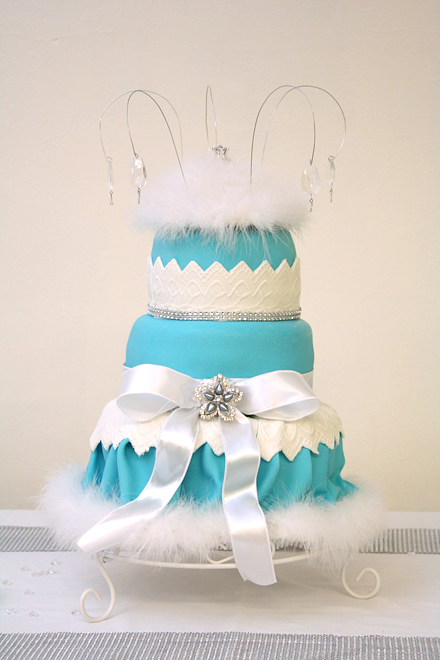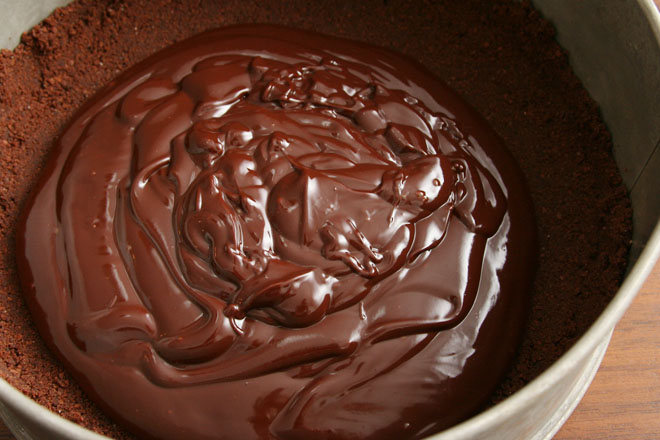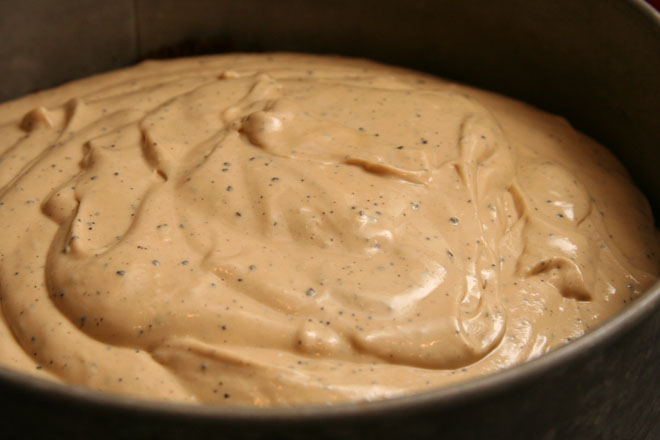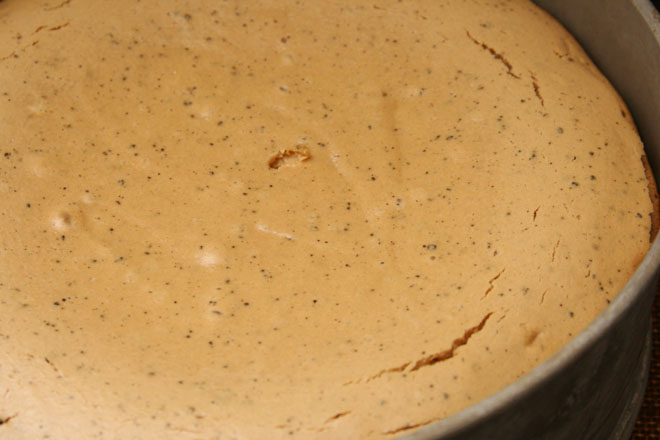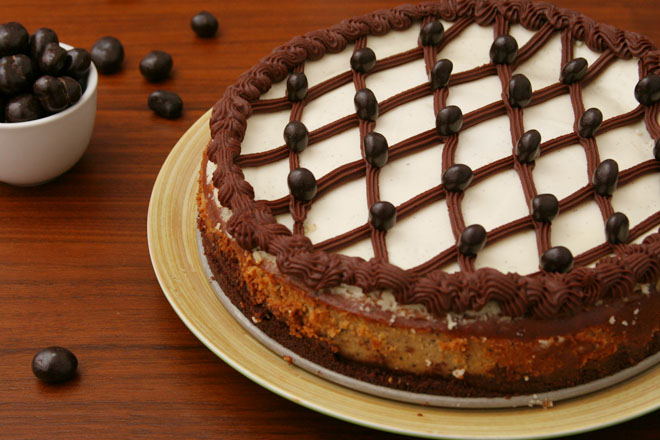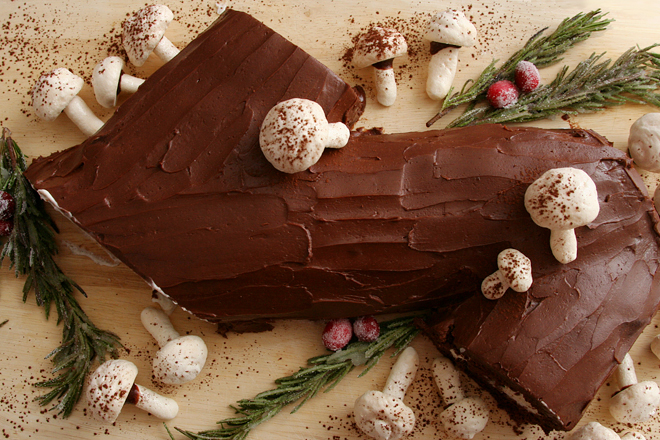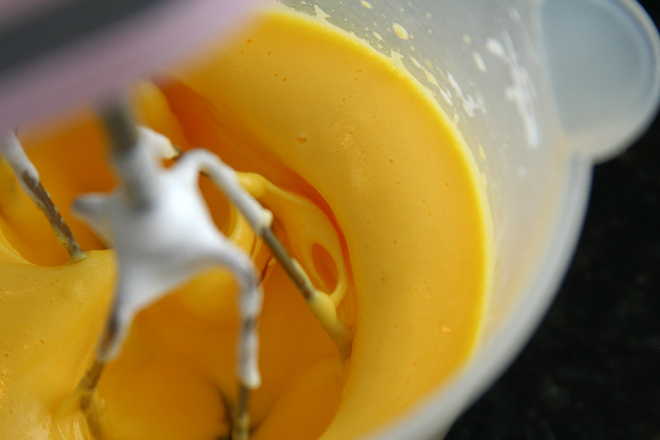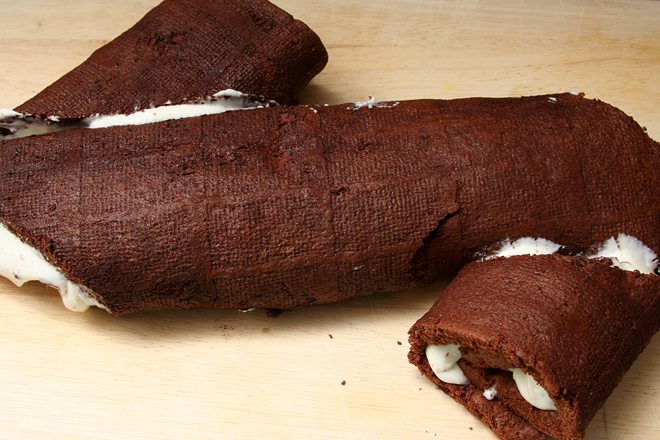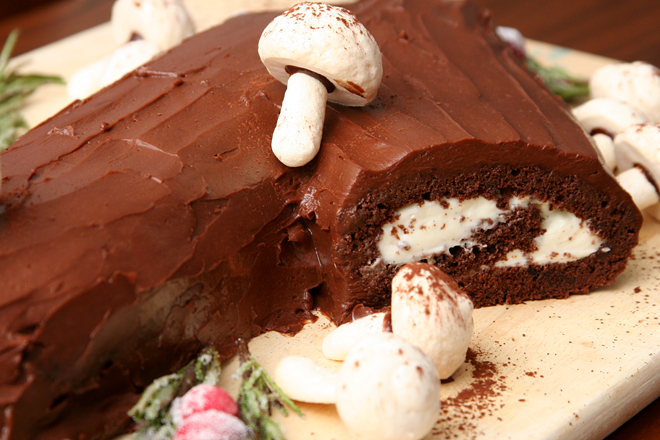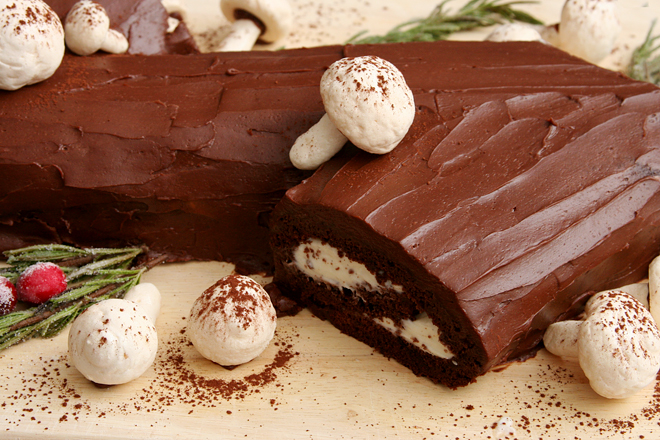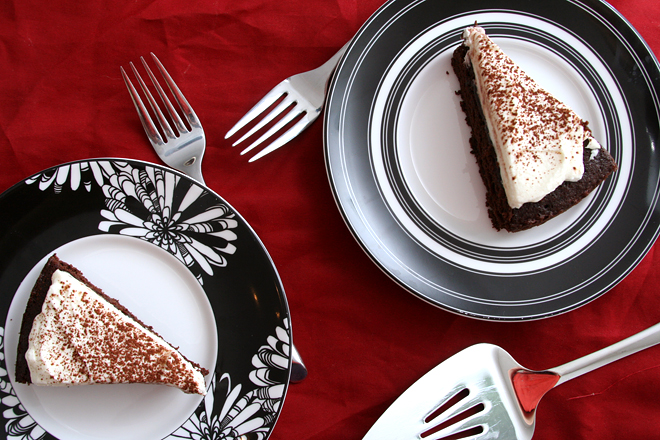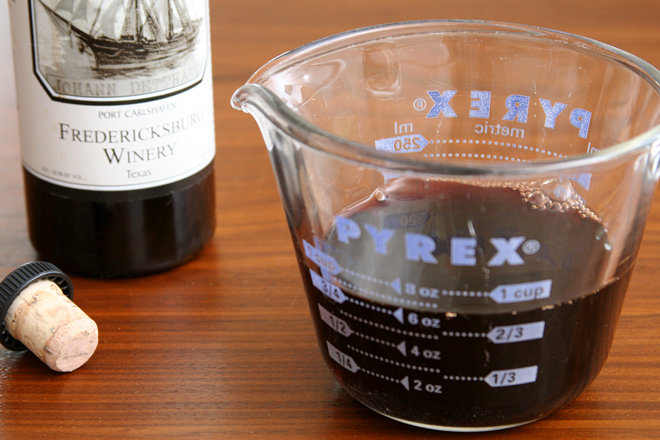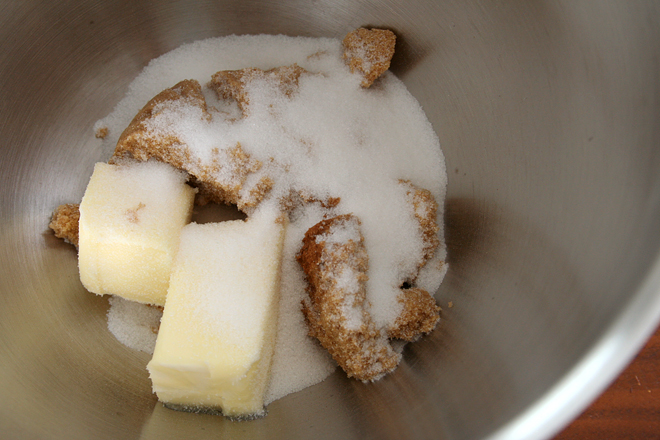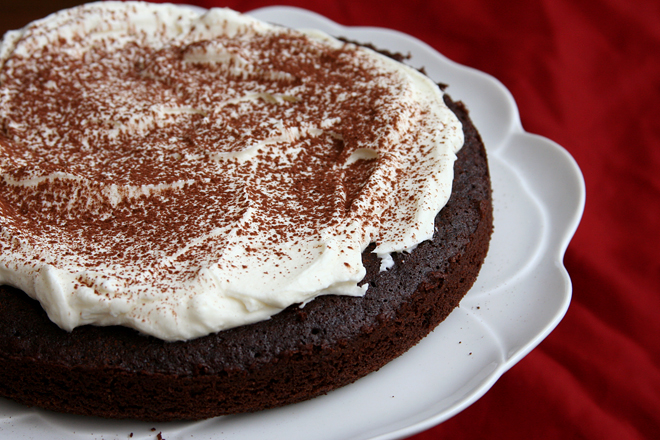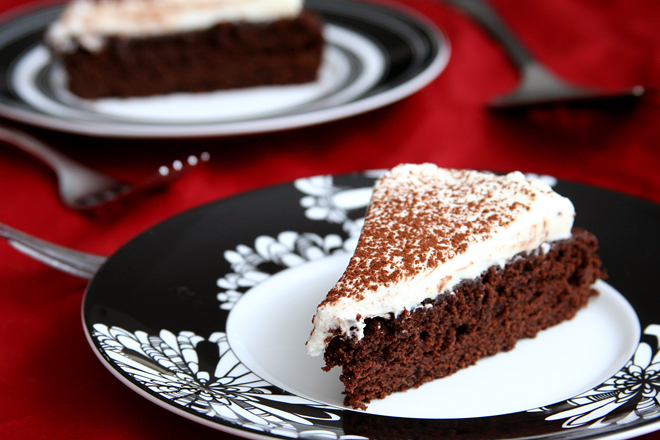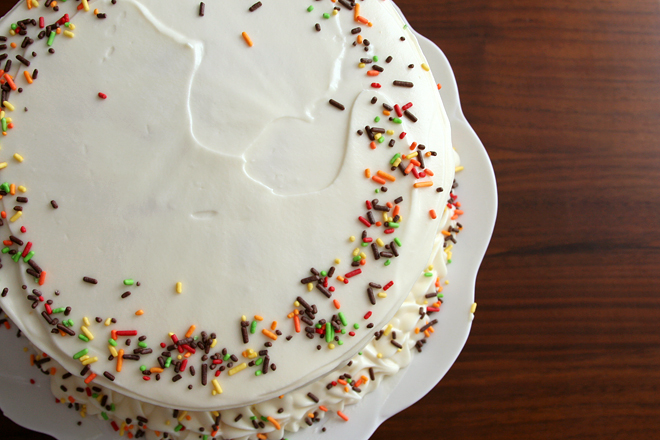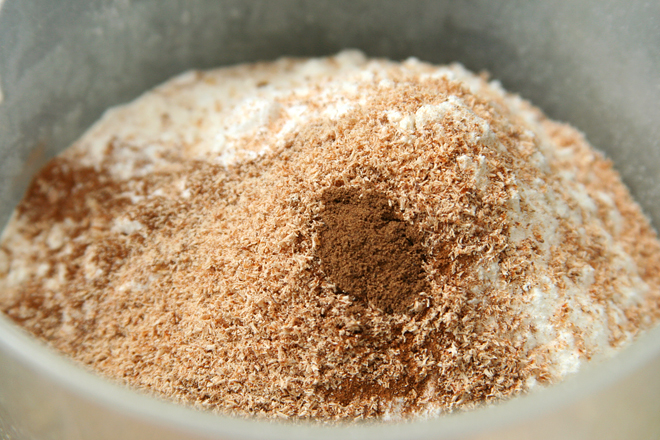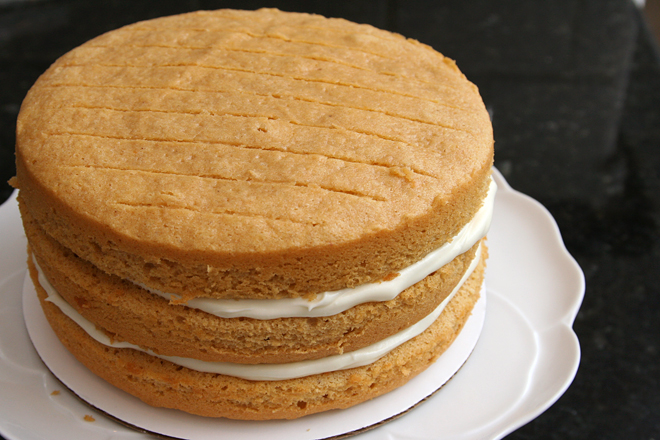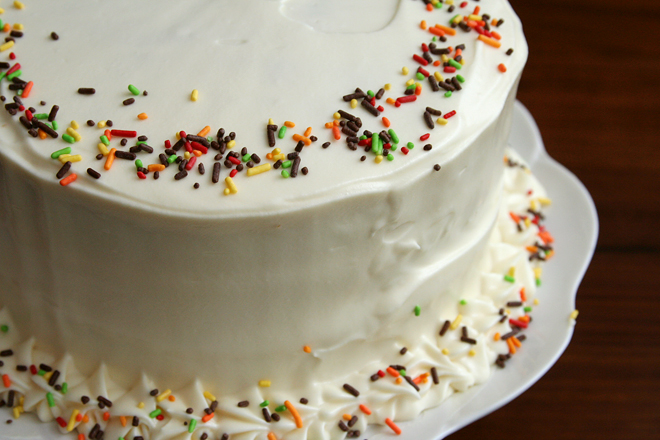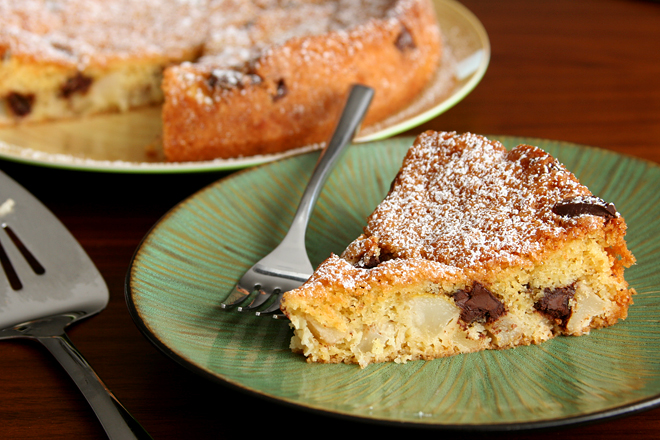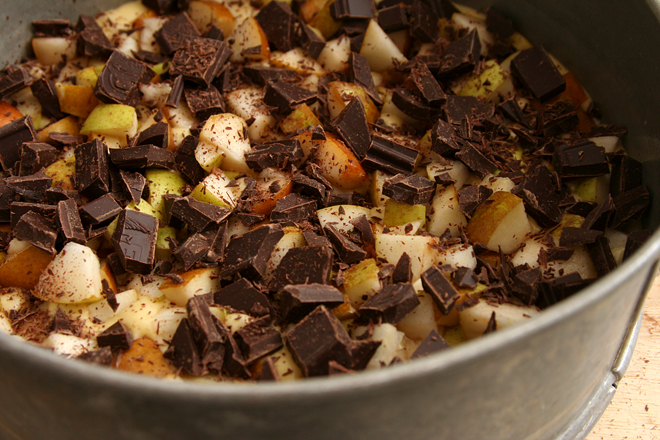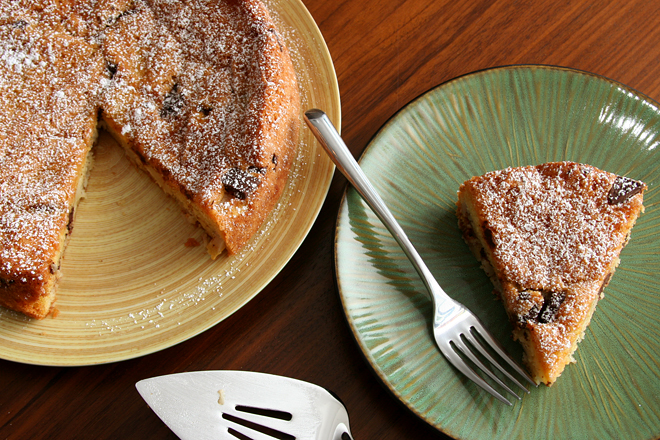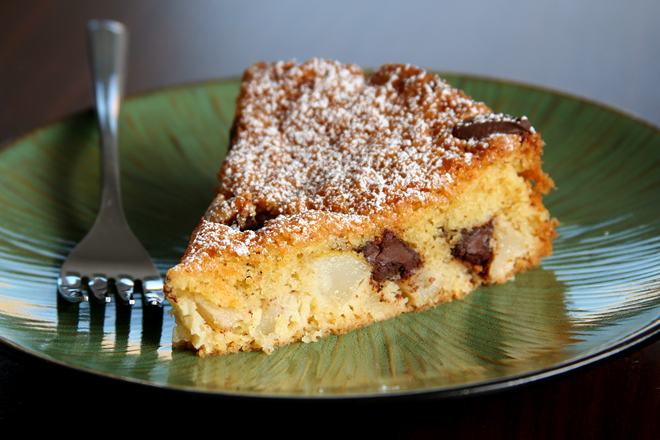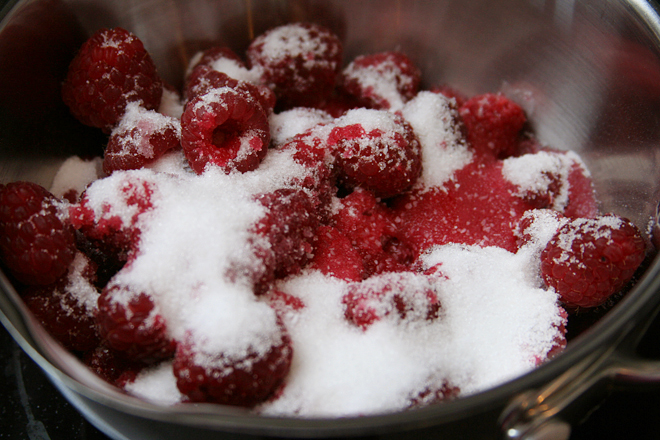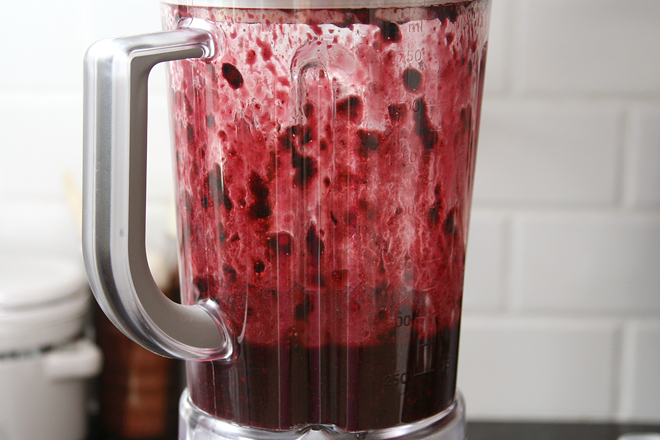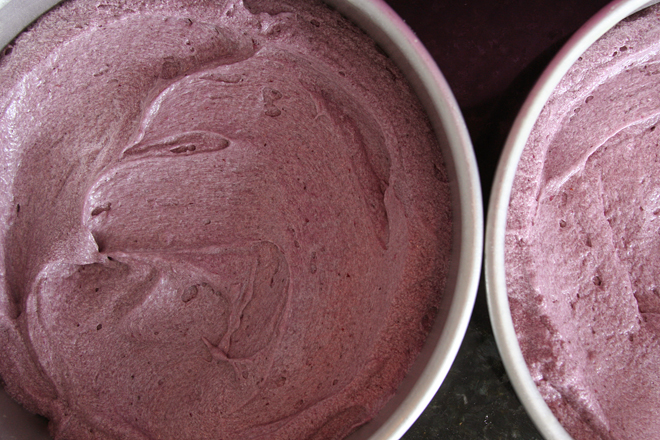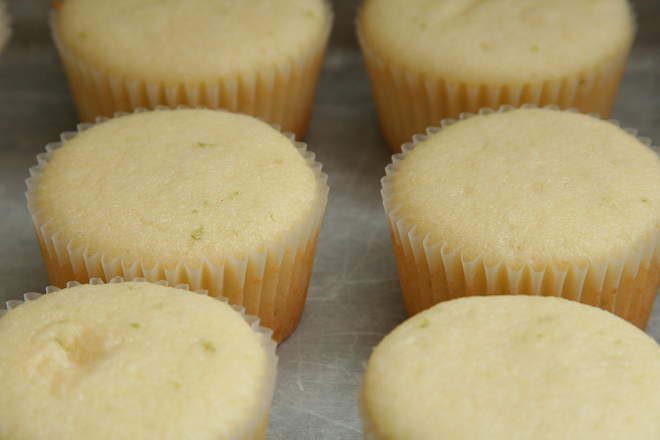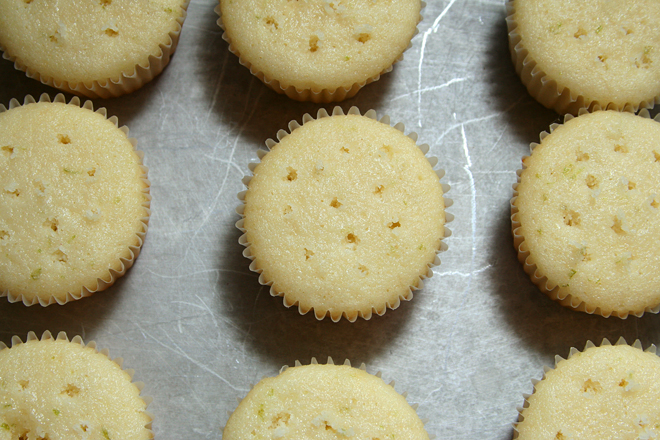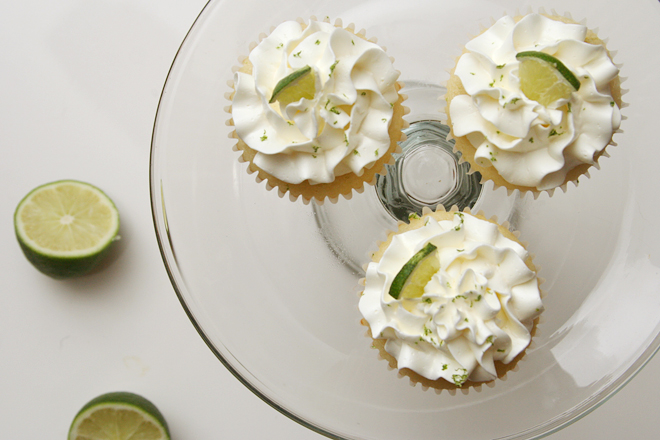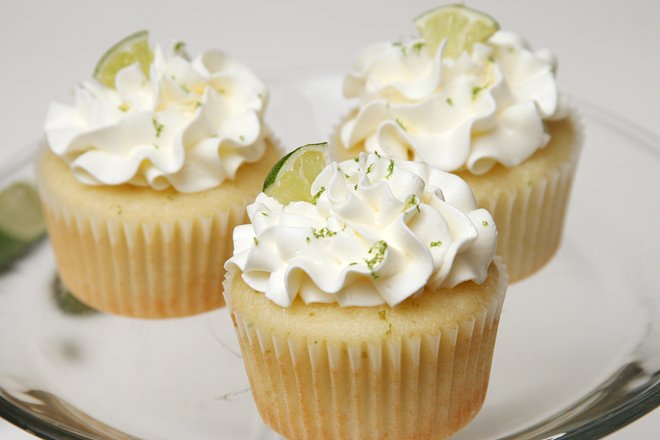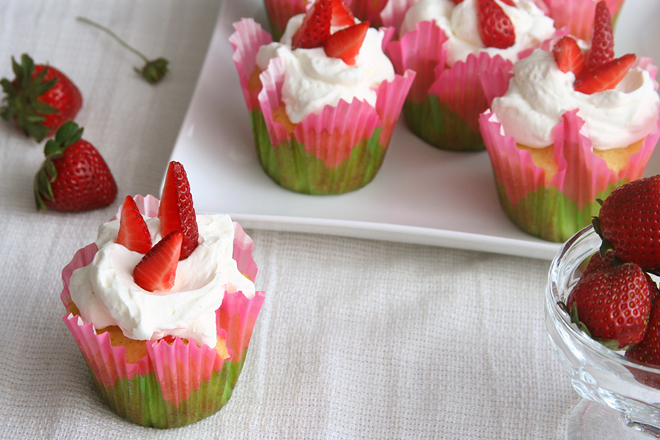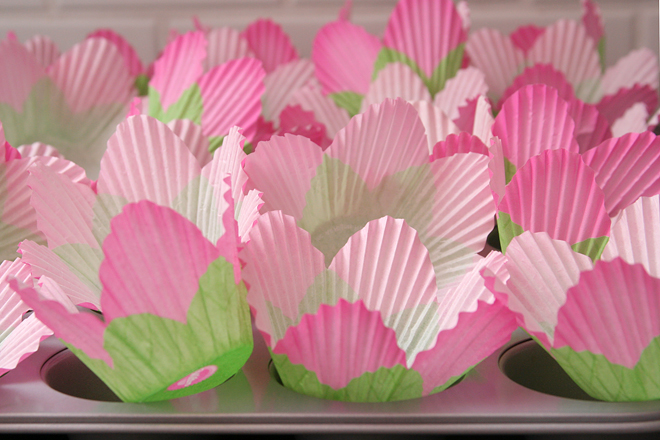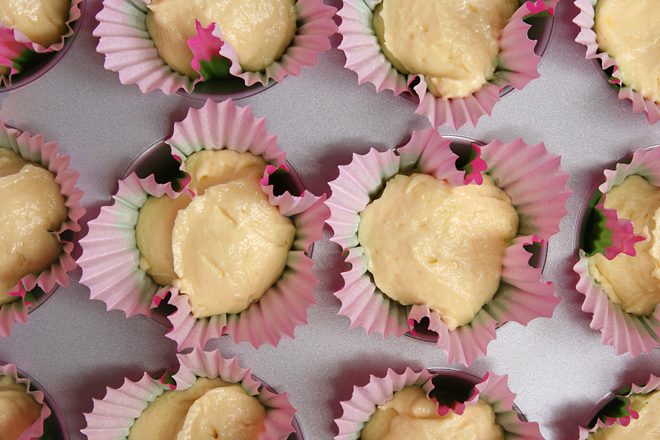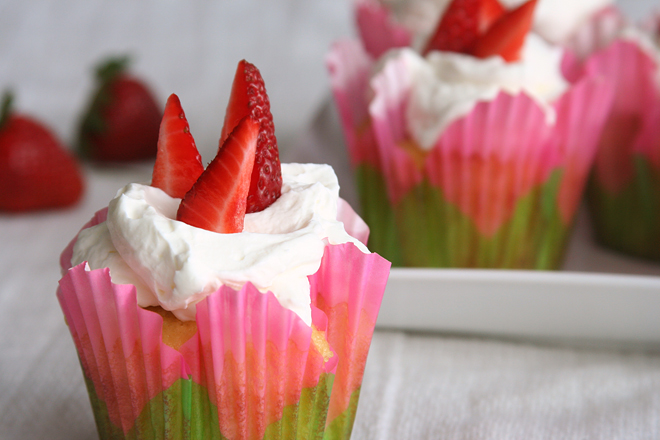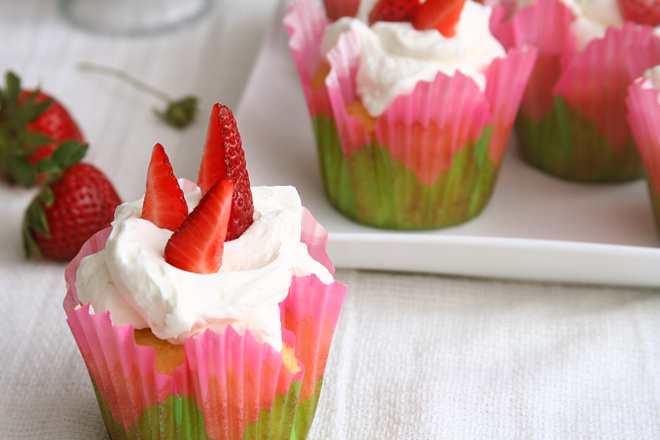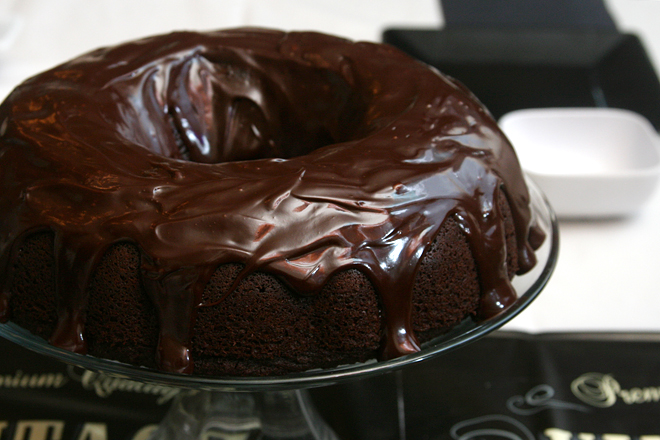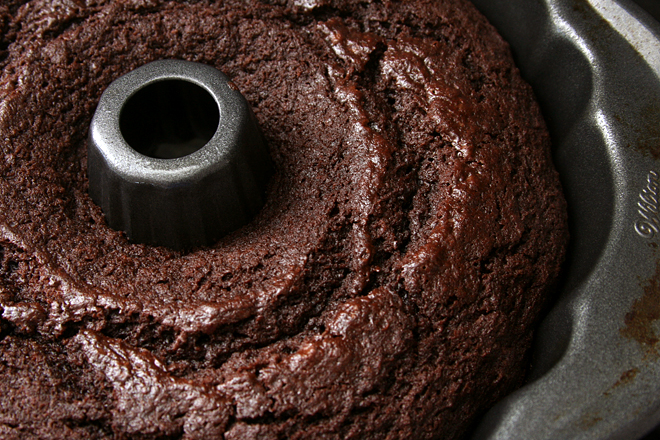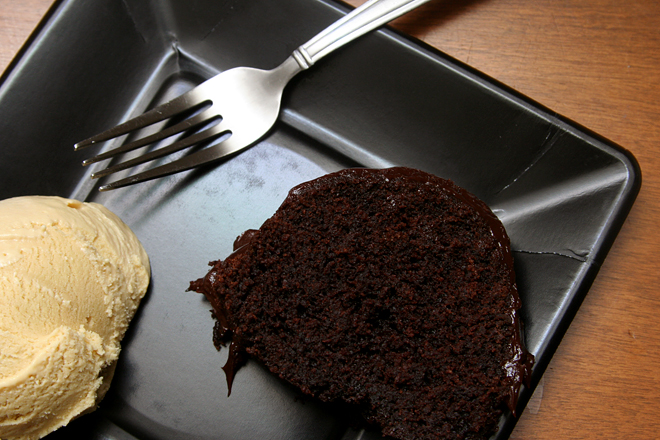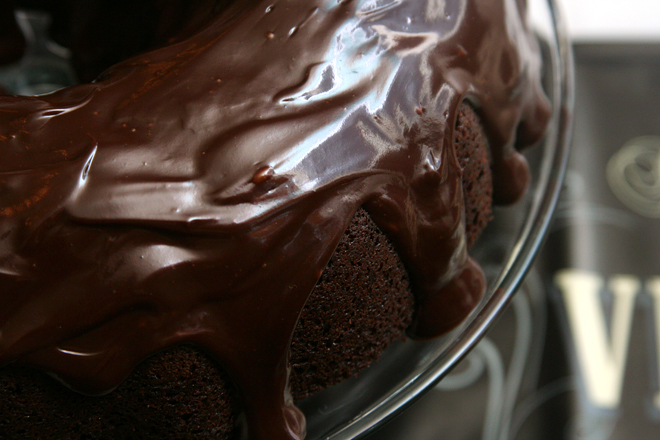Two years ago, I made this cake for a Tiffany-themed baby shower (and I’m just now telling you about it), and it became infamous for the cake that made me cry. I wouldn’t have told anyone that myself, but Dave blurted it out when we delivered the cake. “Never again!”, he told our friends.
I’m actually proud of the cake, but it’s true that it wasn’t a smooth process. When my friend showed me a picture of the cake and asked me to reproduce it for the baby shower she was hosting for her daughter, I ambitiously agreed. I had never worked with fondant before, but how hard could it be?
Well, pretty hard, actually, at least when you’re both inexperienced and a perfectionist. I found a few opportunities to practice before the shower and learned some valuable lessons, but on the morning of the shower, the ruffles and lace were still uncharted territory. Looking back, I can’t remember what caused the tears, but it could have been any number of things – the lace sticking to the mold, running out of fondant, running behind schedule.
Fortunately, whether the lace had obvious seams or the fondant cracked at the corners, I knew the cake itself would taste good. I’m much more confident in my baking skills than my decorating skills. I took one of my favorite white cakes and added lemon zest, so that, at least, was one part of this project that wasn’t complicated.
Despite my struggles, I think the cake turned out great, and the host seemed pleased. It tasted at least as good as it looked. Still, it was two years before anyone asked me to make a tiered cake with fondant for them again. That is what I’ll be doing this weekend. Any bets on how many times I cry this time?
Printer Friendly Recipe
Lemon Cake with Lemon Curd Filling and Cream Cheese Frosting (adapted from Cook’s Illustrated’s Classic White Cake)
Makes a double-layer 8-inch or 9-inch cake
1 cup whole milk, at room temperature
6 large egg whites (¾ cup), at room temperature
2 teaspoons almond extract
1 teaspoon vanilla extract
zest of 1 small lemon
1¾ cups granulated sugar (12¼ ounces)
2¼ cups cake flour (9 ounces)
4 teaspoons baking powder
1 teaspoon table salt
12 tablespoons unsalted butter (1½ sticks), softened but still cool
1. Adjust an oven rack to middle position and heat oven to 350 degrees. Grease and flour two 8- or 9-inch-wide by 2-inch-high round cake pans and line with parchment paper. In a 4-cup liquid measure or medium bowl, whisk together milk, egg whites, and vanilla.
2. In bowl of standing mixer fitted with paddle attachment, mix the flour, sugar, baking powder, and salt at low speed. With the mixer running at low speed, add the butter one piece at a time; continue beating until the mixture resembles moist crumbs with no visible butter chunks. Add all but ½ cup milk mixture to crumbs and beat at medium speed until mixture is pale and fluffy, about 1½ minutes. With mixer running at low speed, add remaining ½ cup milk mixture; increase speed to medium and beat 30 seconds more. Stop mixer and scrape sides of bowl. Return mixer to medium speed and beat 20 seconds longer. Divide batter evenly between cake pans; using rubber spatula, spread batter to pan walls and smooth tops.
3. Bake until toothpick inserted in center of cakes comes out clean, about 20 minutes for 6-inch pans, 22 minutes for 8-inch pans, and 26 minutes for 10-inch pans. Loosen cakes from the sides of the pans with a small knife, cool in pan 10 minutes, then invert onto greased wire racks; peel off parchment. Invert the cakes again; cool completely on rack, about 1½ hours.
Lemon Curd Filling (from Cook’s Illustrated)
⅓ cup lemon juice, from 2 lemons
2 large eggs
1 egg yolk
½ cup sugar (3½ ounces)
2 tablespoons unsalted butter, cut into ½-inch cubes and chilled
1 tablespoon heavy cream
¼ teaspoon vanilla extract
pinch table salt
1. Heat lemon juice in small nonreactive saucepan over medium heat until hot but not boiling. Whisk eggs and yolk in medium nonreactive bowl; gradually whisk in sugar. Whisking constantly, slowly pour hot lemon juice into eggs, then return mixture to saucepan and cook over medium heat, stirring constantly with wooden spoon, until mixture registers 170 degrees on instant-read thermometer and is thick enough to cling to spoon, about 3 minutes.
2. Immediately remove pan from heat and stir in cold butter until incorporated; stir in cream, vanilla, and salt, then pour curd through fine-mesh strainer into small nonreactive bowl. Cover surface of curd directly with plastic wrap; refrigerate until needed.
Cream Cheese Frosting (adapted from Smitten Kitchen)
Makes 6 cups
You can use 12 ounces powdered sugar instead of 16 if you’re going to make pretty swirls with the icing instead of decorating. It’ll taste less sweet and more cream cheesy.
8 ounces cream cheese, room temperature
8 tablespoons (1 stick) butter room temperature
4 cups (16 ounces) powdered sugar
1 teaspoon pure vanilla extract
Place cream cheese and butter in a medium bowl. With a handheld electric mixer, beat until light and fluffy, about 2 minutes. Add sugar and vanilla. Beat on low speed to combine.


